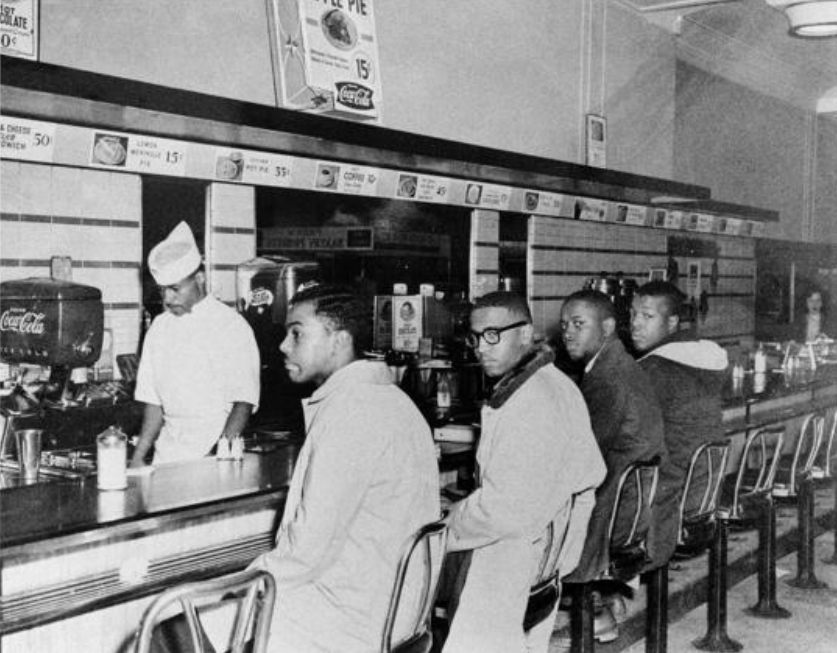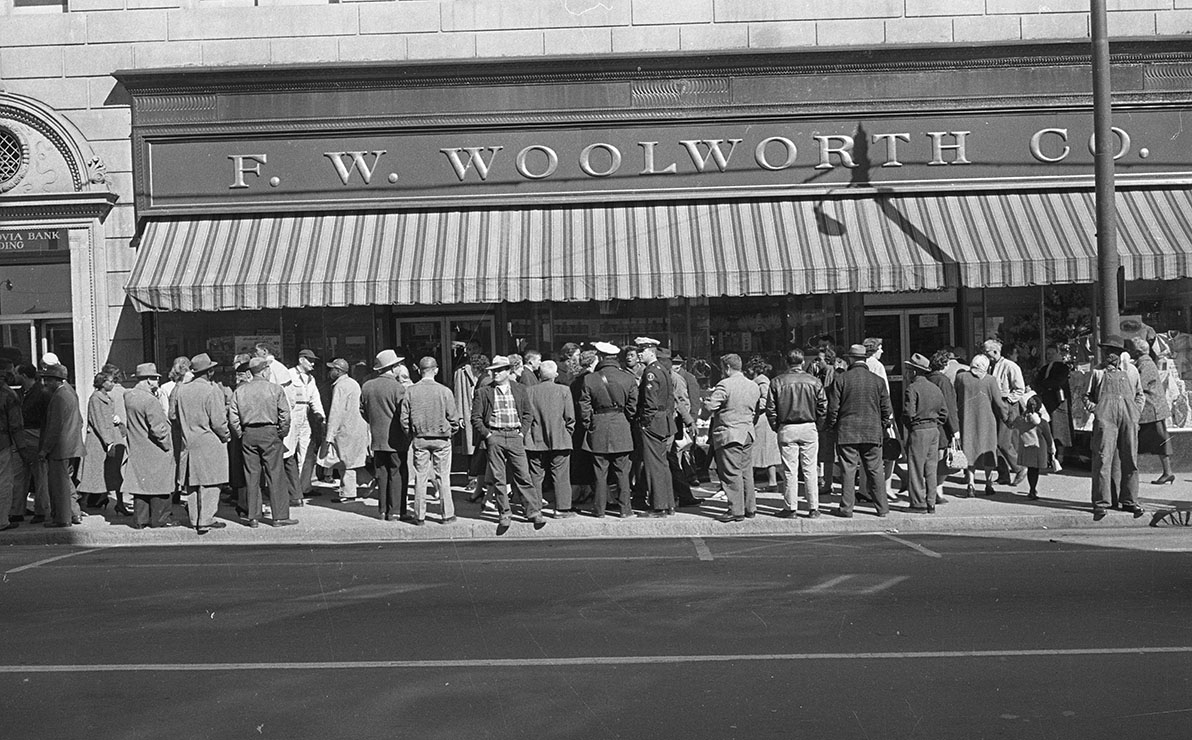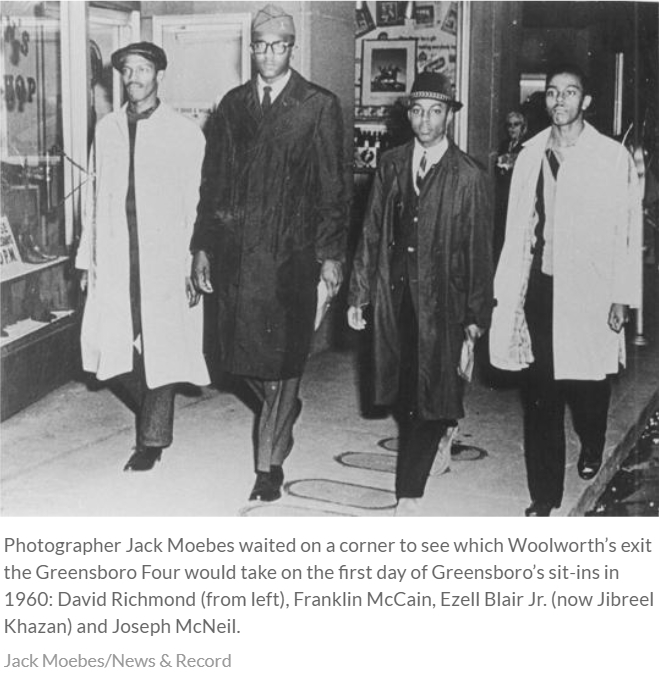

On the first of February in 1960, four black Americans did a sit-in in Greensboro, North Carolina. The four men were college students who wanted to order a cup of coffee. They chose a store called Woolworth’s. It was a store that served food, but not if you were black. Many stores used discrimination towards blacks. Woolworth’s would not serve black customers at the lunch counter. The four students planned to stay sitting in the store to protest, or show that they did not agree, that they were not served.
The four black students did not get served that day. The store called the police, but the men would not leave. They stayed until Woolworth’s closed. Earlier that day, a friend had called some news people and told them about the sit-in. The news people went to see what was going on and to report on it. The next day more black students came and did another sit-in. The number of people that were coming to the sit-ins kept growing. On the fourth day more than 300 students went to the sit-in at Woolworth’s.
 The sit-in movement grew. In college towns across the country other sit-ins were done. The sit-ins were organized to be peaceful. However, many other customers were not peaceful. They were rude and mean. They would say mean things to the protesters. Sometimes they would throw food at the protesters. A protester is someone who publicly objects to something. Some whites also helped do the sit-ins. By March there were sit-ins in 55 cities in 13 different states.
The sit-in movement grew. In college towns across the country other sit-ins were done. The sit-ins were organized to be peaceful. However, many other customers were not peaceful. They were rude and mean. They would say mean things to the protesters. Sometimes they would throw food at the protesters. A protester is someone who publicly objects to something. Some whites also helped do the sit-ins. By March there were sit-ins in 55 cities in 13 different states.
Many were arrested at sit-ins, but the blacks kept doing them. They did not use violence. Some protesters got hit or pushed. If the protesters were being hit or pushed, sometimes they would just lie down. That made it harder for the owners to get them out of their stores. Protesters were working to change the Jim Crow Laws.

Almost six months later the Greensboro Woolworth store finally started serving blacks at their food counter. They quietly had four of their black employees be the first blacks to be served. The country took notice of the problem. Other stores began to change the way they did things.
What the Greensboro Four really wanted was to change America. Slowly, the way blacks were treated changed across the country. Sit-ins helped to make those changes. The places that discriminated against blacks changed the way they did things. They stopped using discrimination in their stores and places of business.

The Greensboro Four Sit-in took place 60 years ago. The four college students that staged the first prominent sit-in of the Civil Rights Movement had carefully planned out what they would do. They planned to 'sit in' all day. They wanted to pressure Woolworth's to change their policies that allowed discrimination. Before going to Woolworth's that first morning, they stopped and talked to a local business man with whom they had obtained cooperation so that he could contact the news media. The media showed up at Woolworth's, and the news ended up on national television.

The four students were Ezell Blair Jr. (now known as Jibreel Khazan), David Richmond, Franklin McCain, and Joseph McNeil. They were students at North Carolina Agricultural and Technical College.
The second day more than 20 black students showed up for another sit-in. On the third day, there were more than 60 students and more than 300 on the fourth day. The sit-ins quickly spread to other college towns in North Carolina. Then they spread to Nashville, Atlanta, across the south and then the country.
The counter serving policy at the Greensboro Woolworth’s was to not serve blacks. Some of the servers were black. At the sit-ins other customers harassed the protesters.
The Greensboro sit-ins became the catalyst for the Student Nonviolent Coordinating Committee (SNCC) which became a significant force in the Civil Rights Movement of the 1960's.
This picture by Jack Moebes of the Greensboro Four was taken when they were leaving the Woolworth's store that first evening because Jack did not get there early enough to get in. He did not get there earlier because he was on another assignment and was beeped about and sent to the sit-in after the famous four had arrived. He waited outside in a spot where he would be able to see and catch them as they left. This photograph was what he was able to take that first day. The next day he got the picture of them that is included at the top of this text, at the Woolworth's lunch counter.